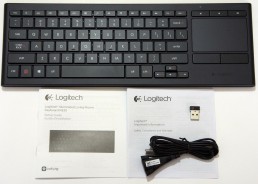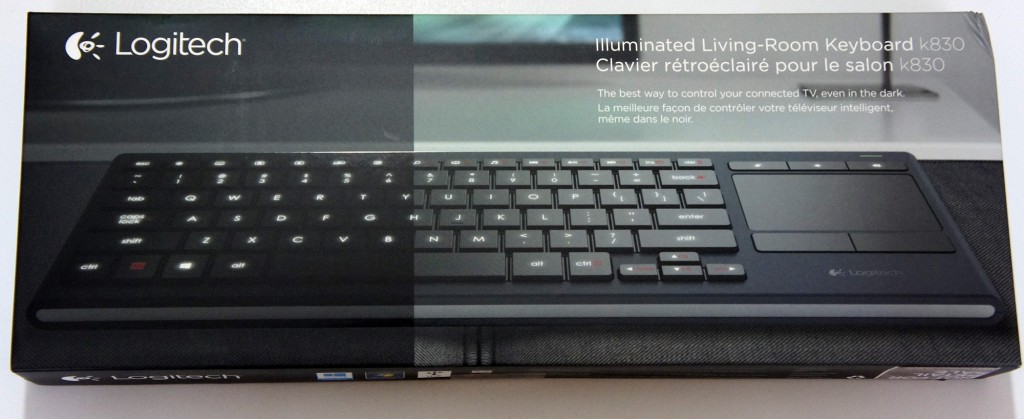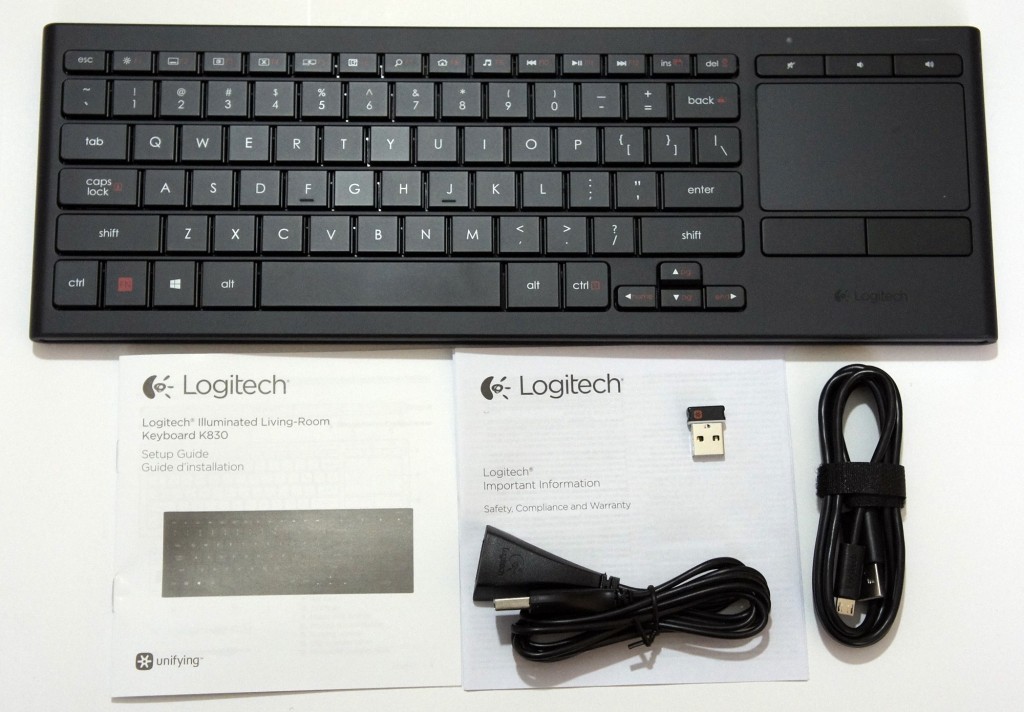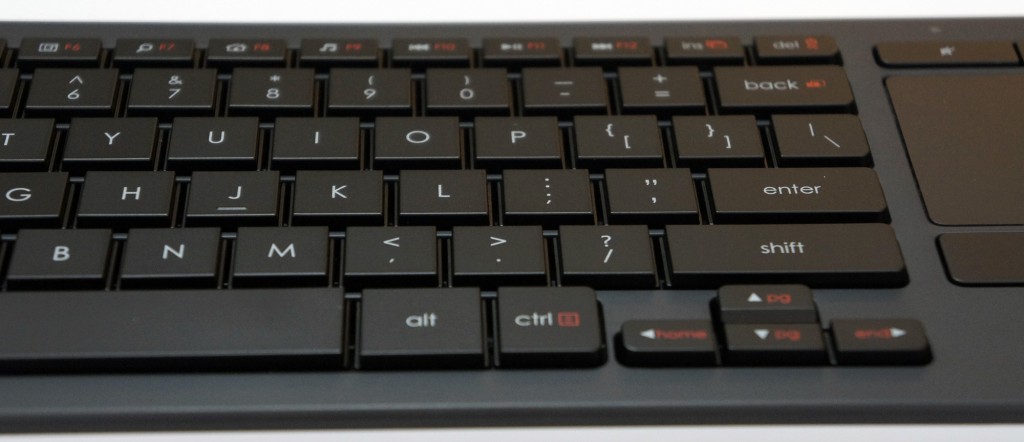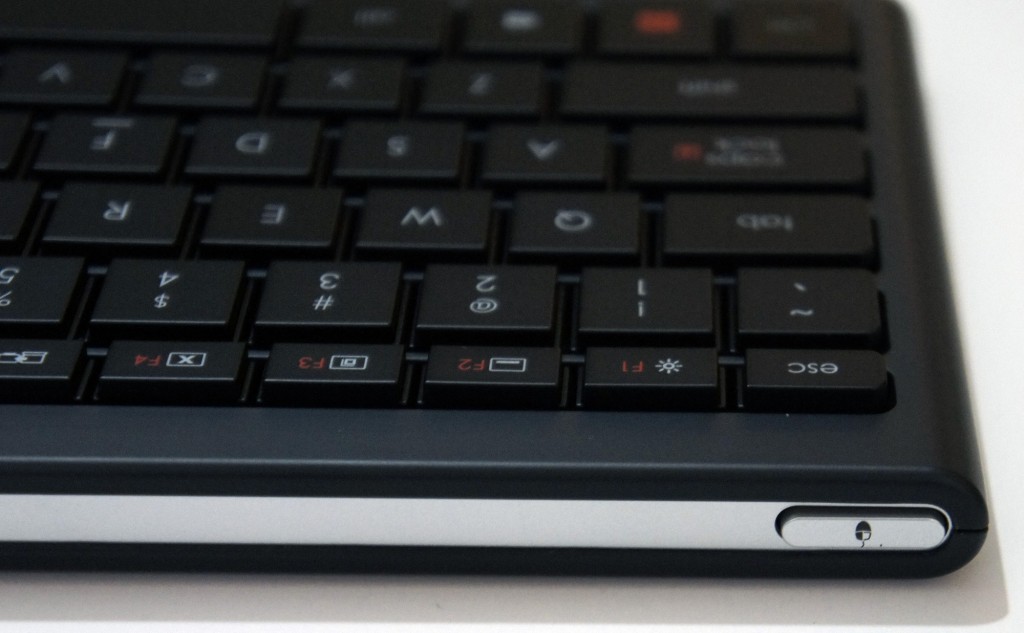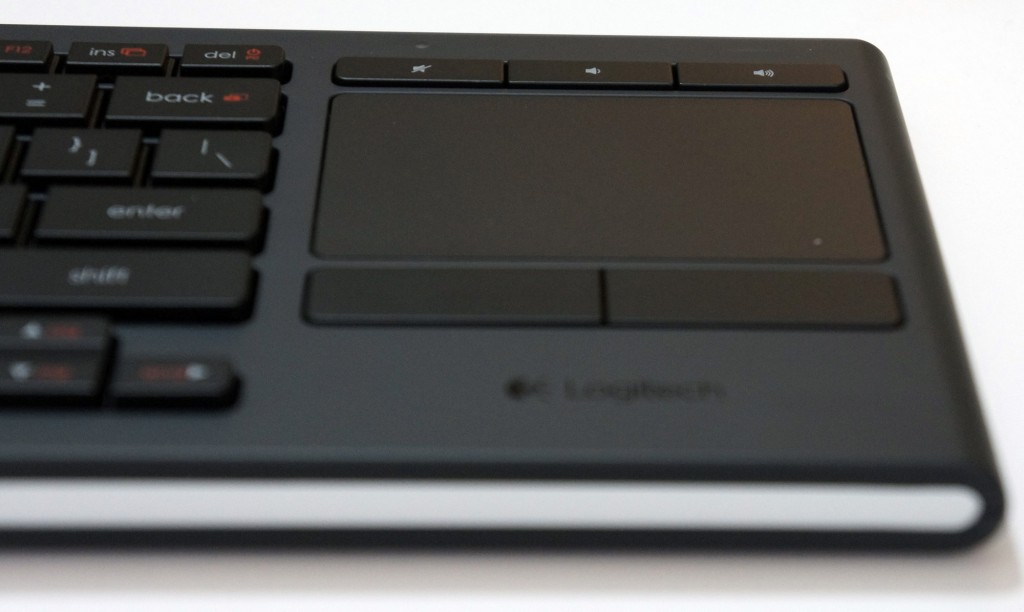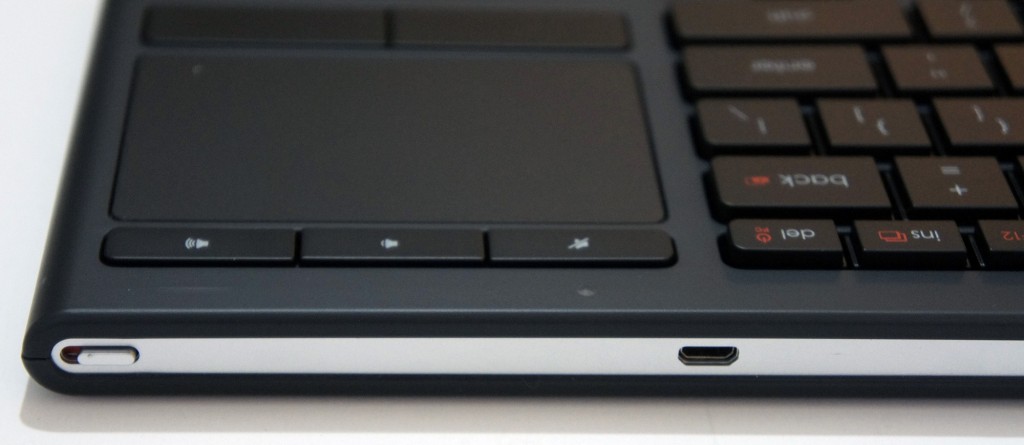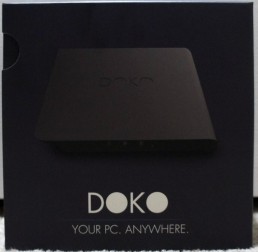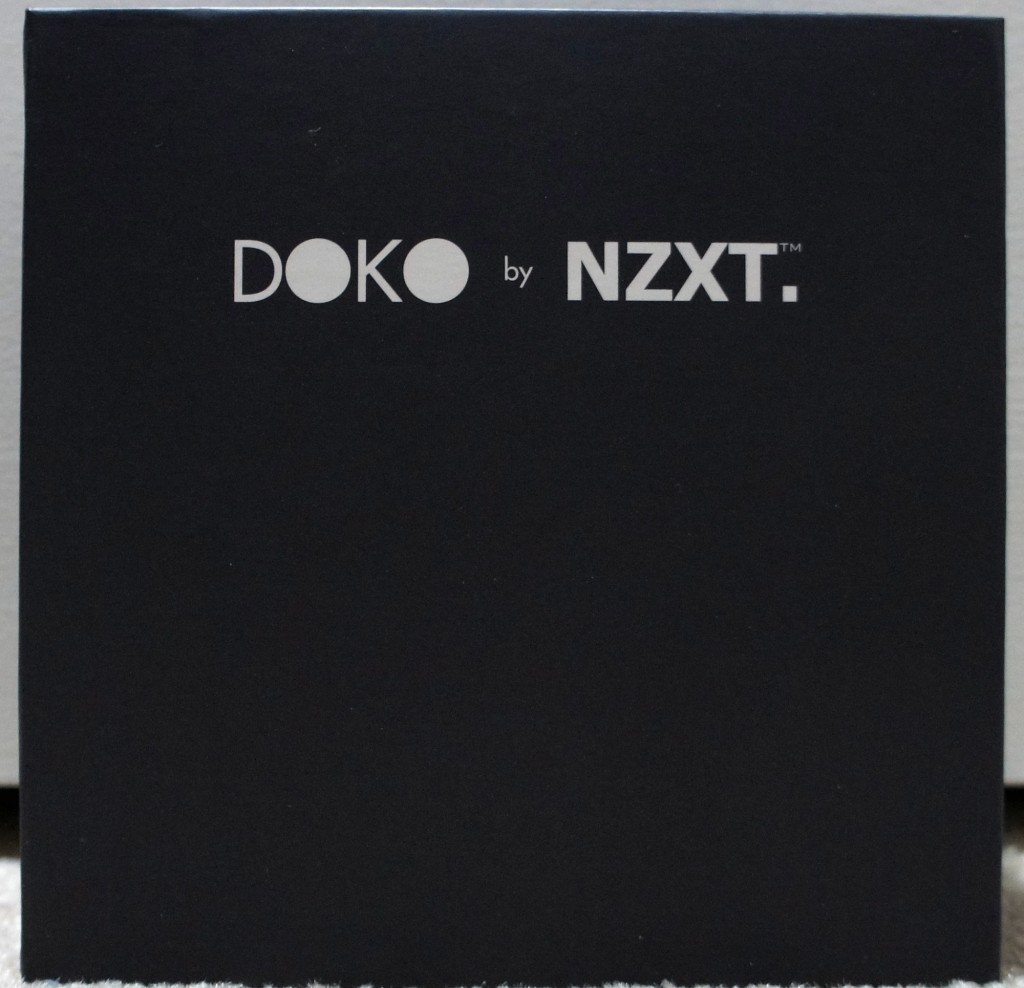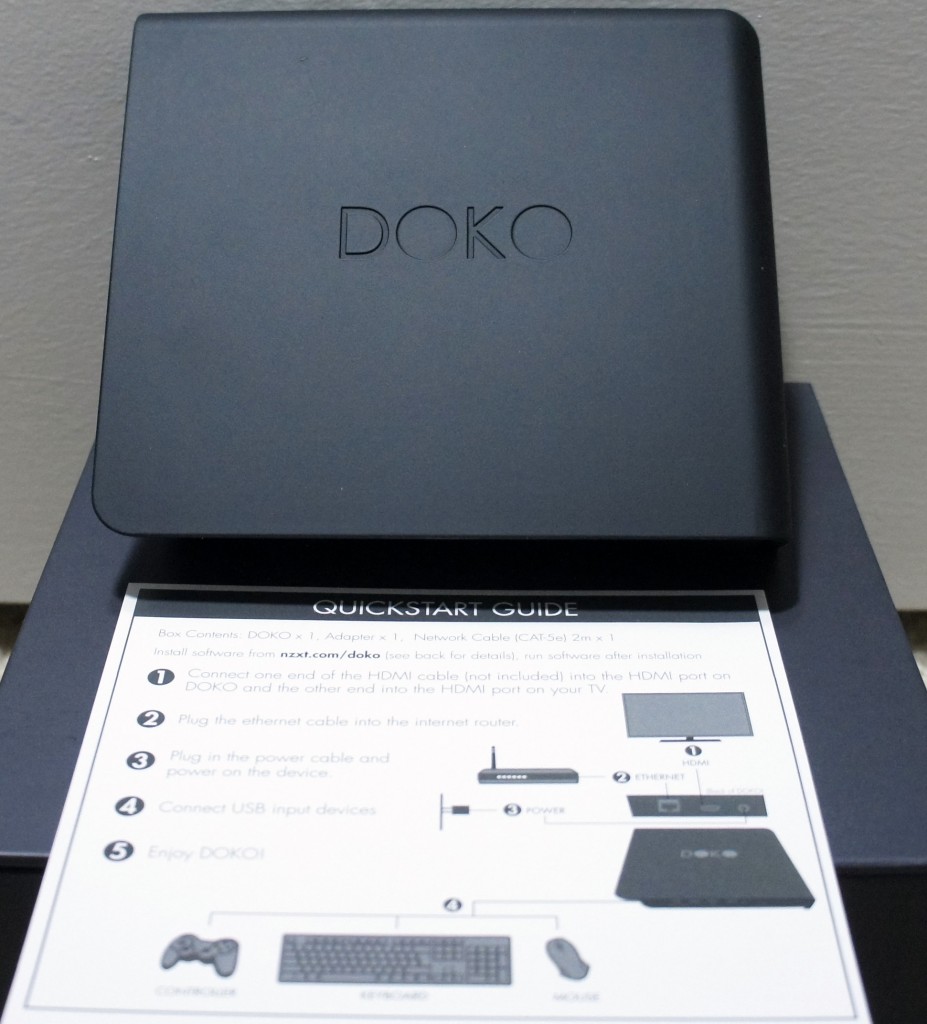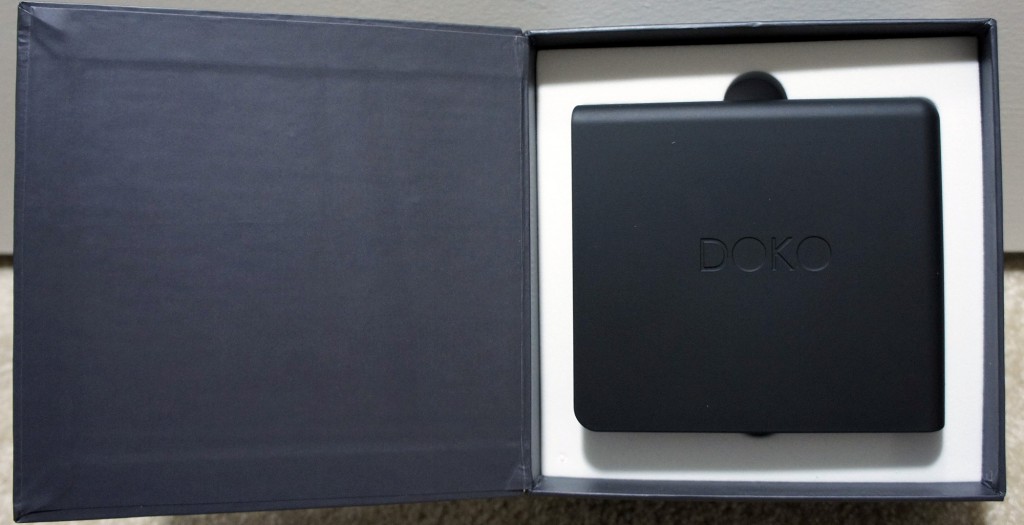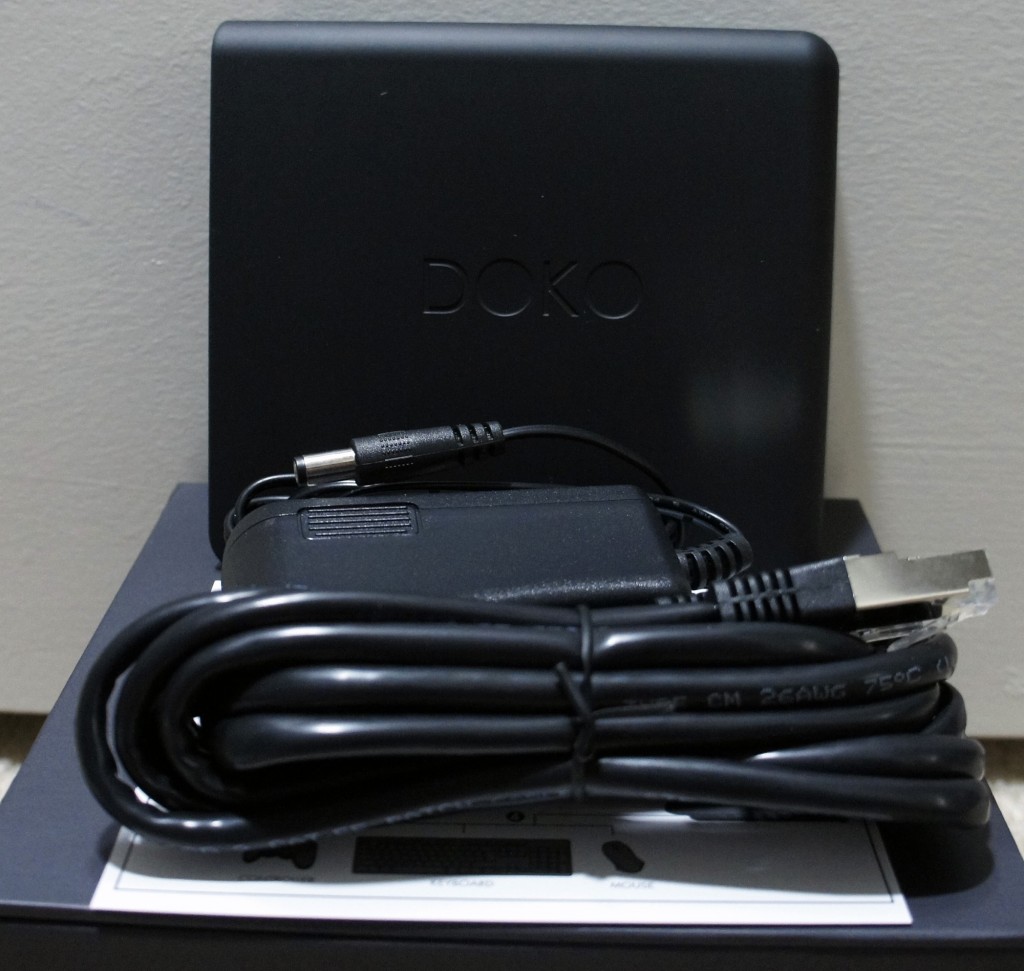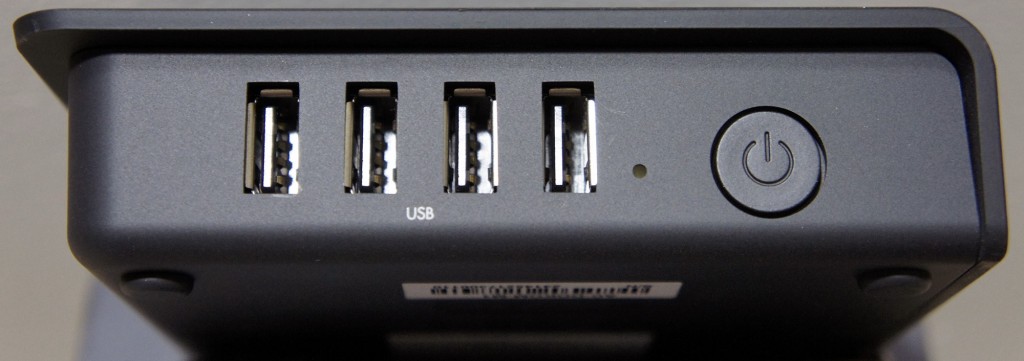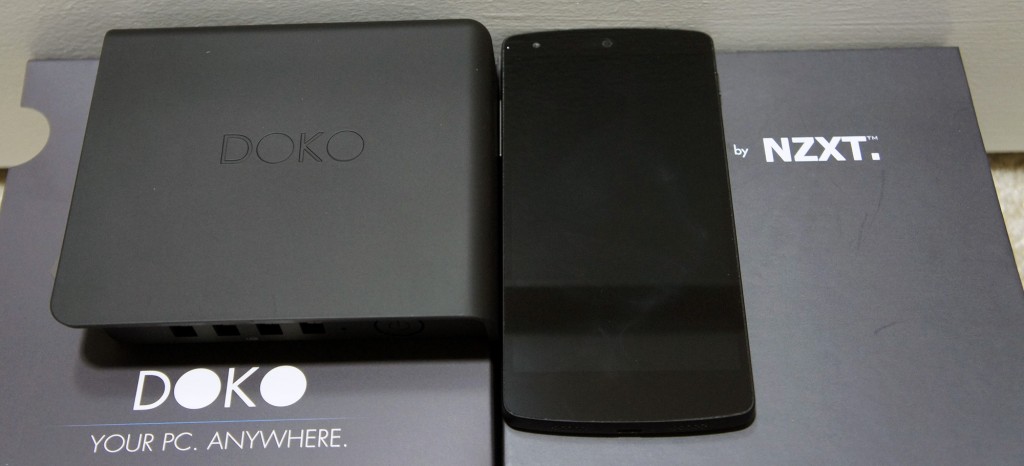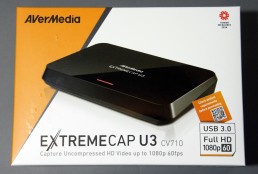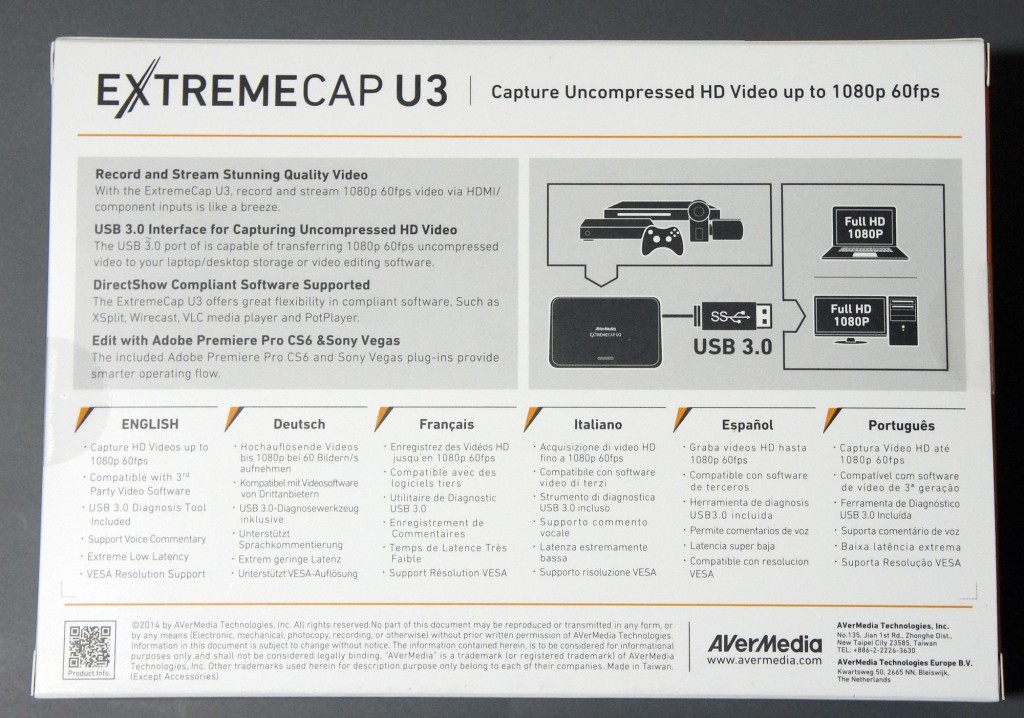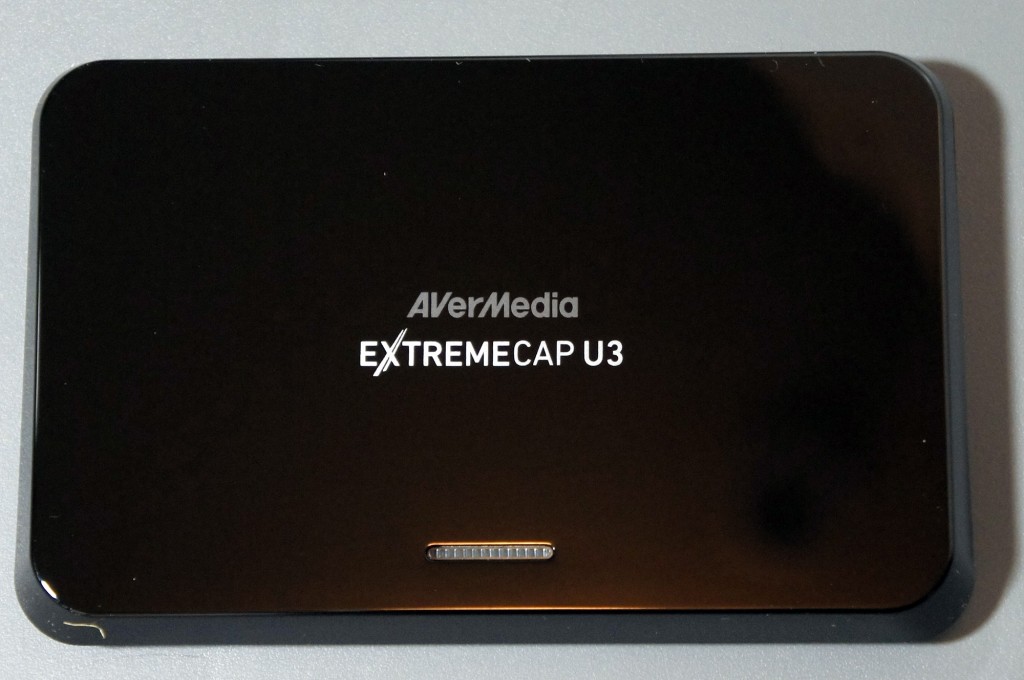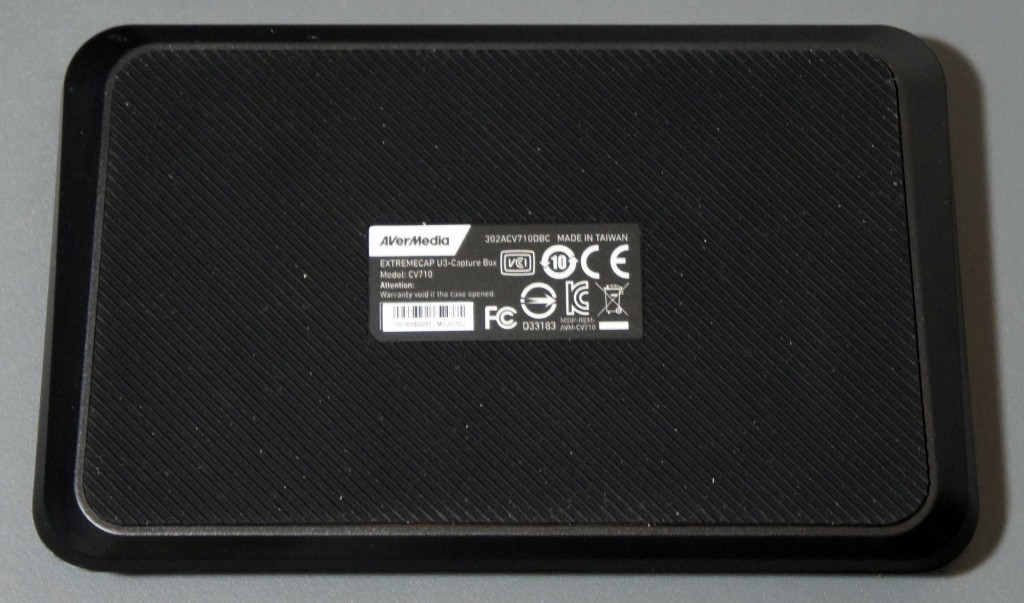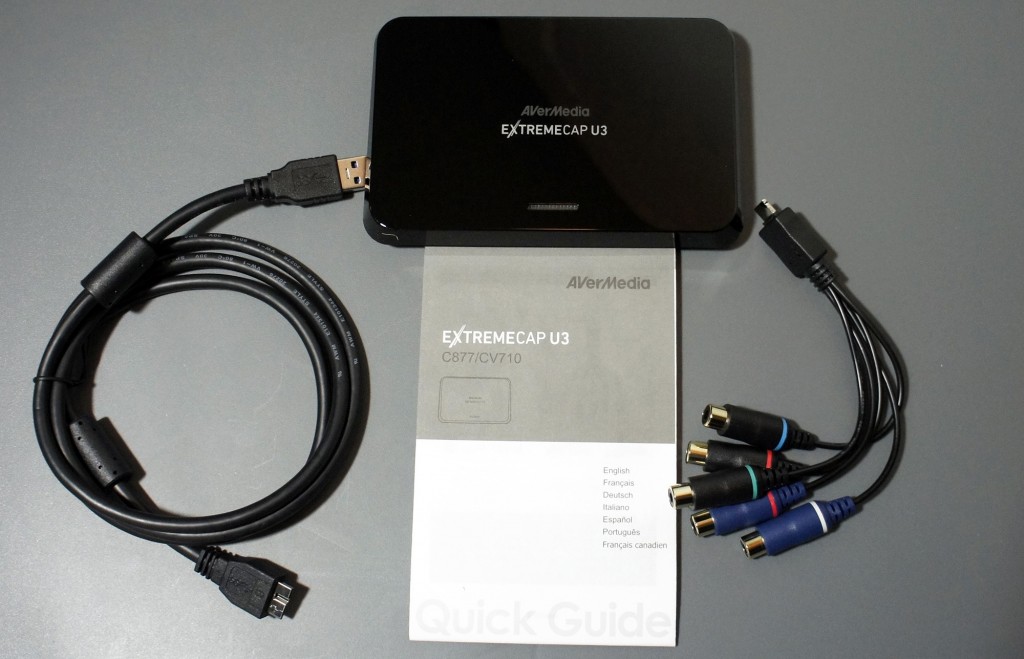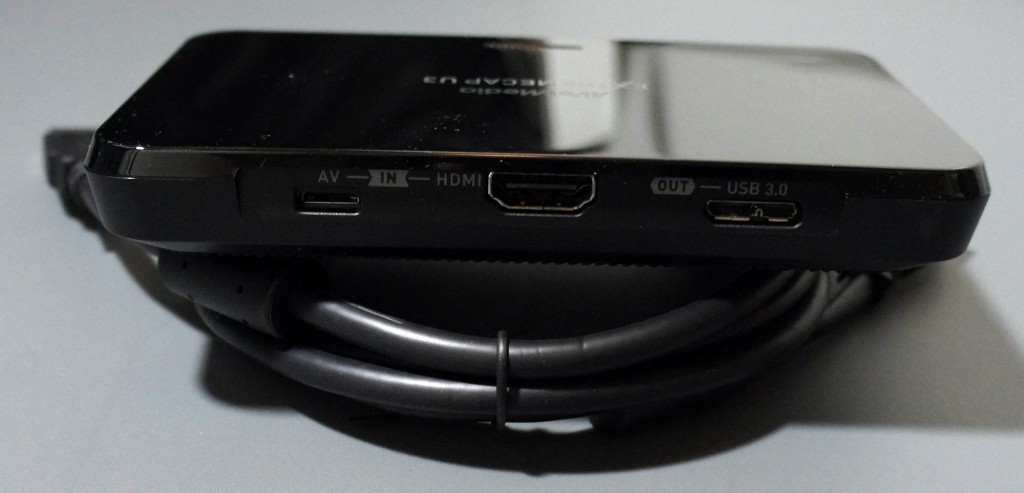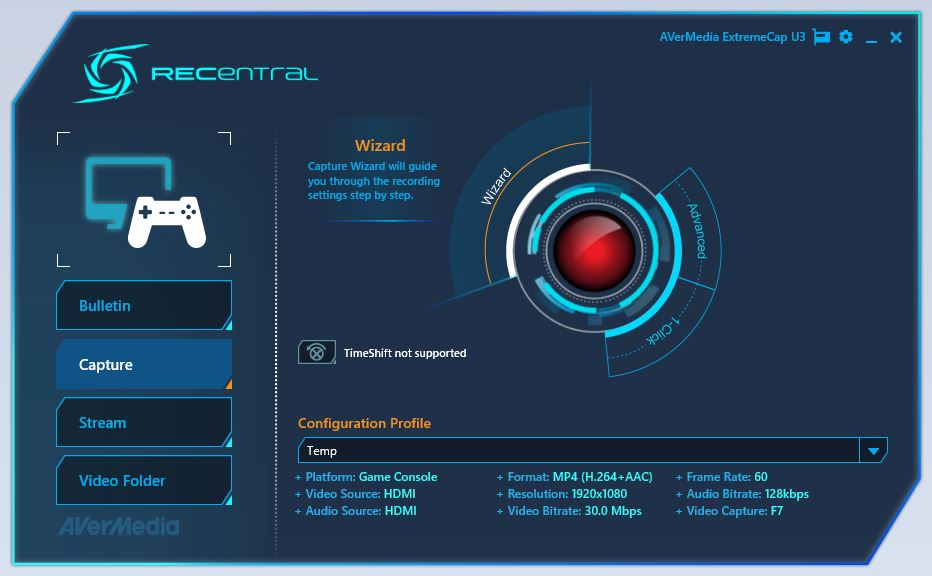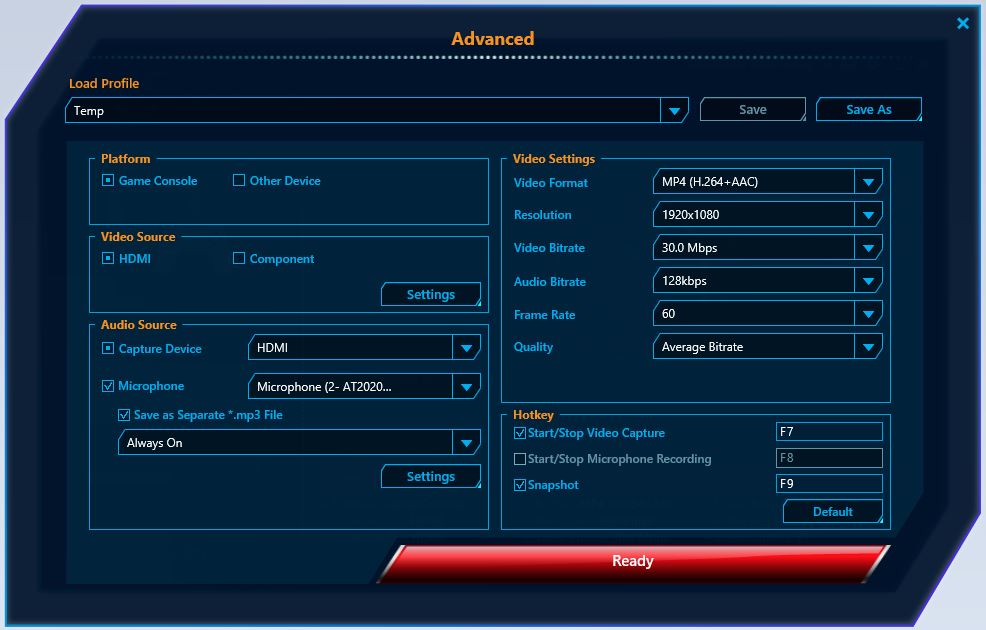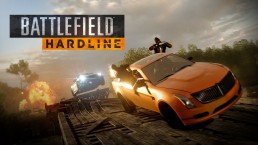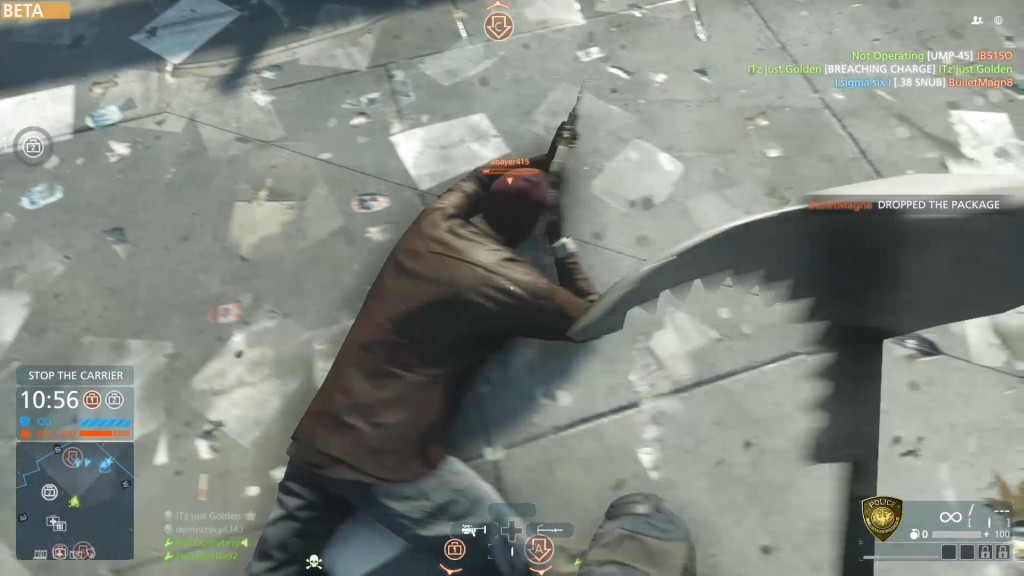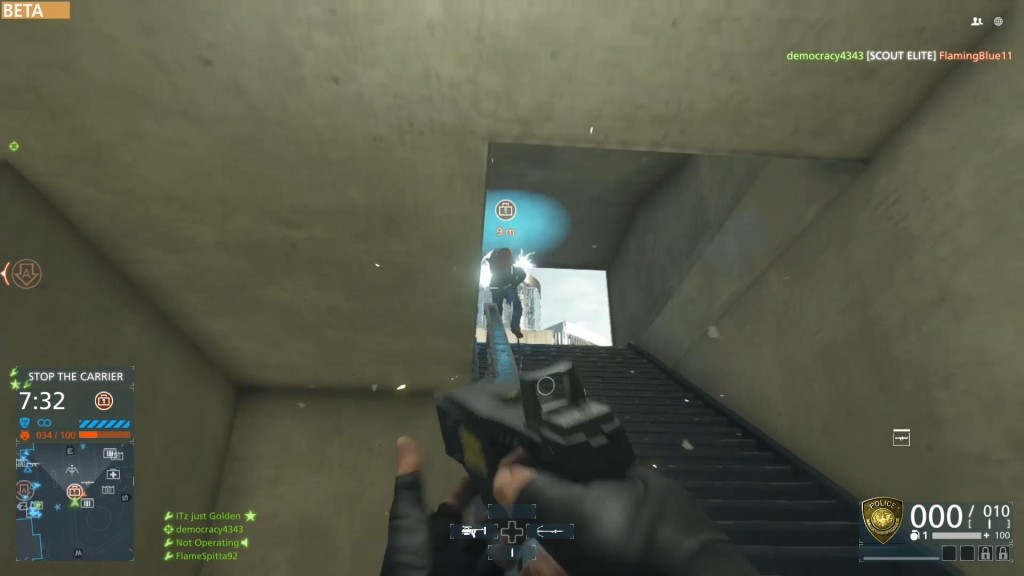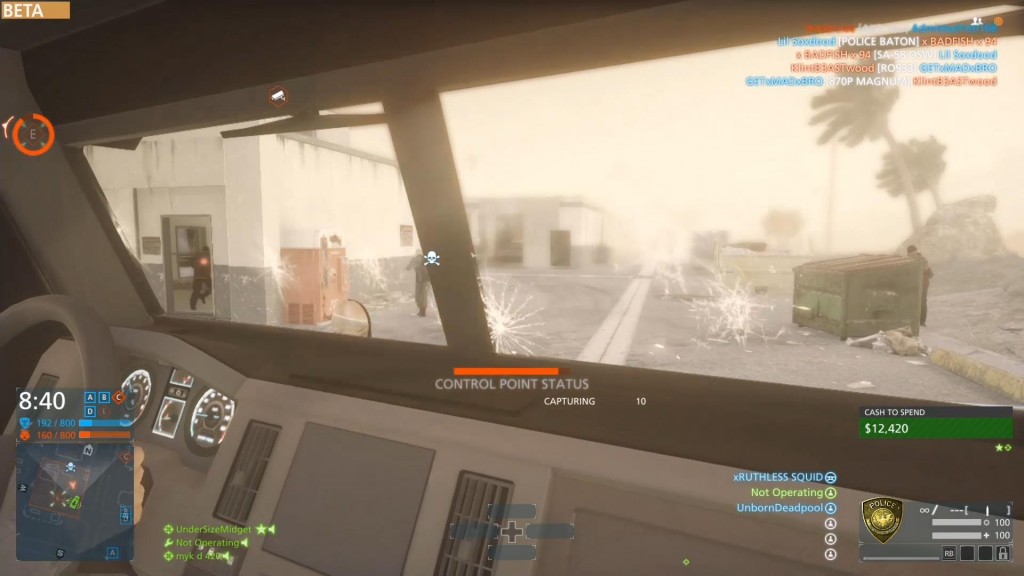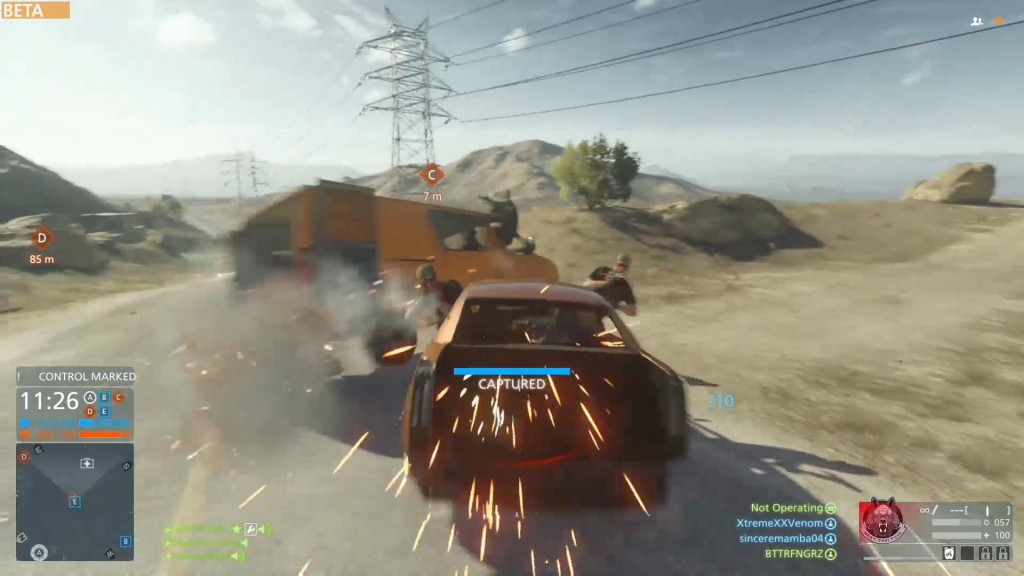Month: March 2015
Kilroy Joins the Army – Part II – Reception
My friend and fellow Not Operator author, Kilroy, said he was joining the US Army last year. We realized that his experiences would make for an interesting read, especially when there are so few online writings about what it is like, emotionally and physically, to experience modern basic training and beyond. He agreed to keep a journal of his time, and that we would publish it to Not Operator.
Kilroy tends to write his personal journals with pretty purple prose, so with his permission, I’ll be editing and paraphrasing his journal a bit to make it an easier read, with the help of my other friend and fellow Not Operator author, Michael. I’ll also be adding comments of my own in bold brackets [like this] to provide some extra context when necessary. If there’s large enough demand for it, we will post the full, unedited, version of Kilroy’s journal. To avoid making Kilroy’s experiences one giant wall-o-text, the journal will be broken up into an ongoing series of articles where it makes sense to do so. Plus, with Kilroy still in the Army, the journal is far from complete.
All entries in the Kilroy Joins the Army Series can be found here.
Without further ado, welcome to Kilroy Joins the Army – Part II – Reception.
Day 4:
It’s been four days that have felt like a month, I’m still not in Basic Training, and I have no clue when I’ll finally finish processing. The worst part is that it feels like nothing is getting done and there’s no sense of progress at all.
Our days start in the dark at 3:00 AM. We are expected to arrive at our positions 15 minutes before we’re actually supposed to be there. The lack of sleep is both miserable and pointless, since we’re being woken up to do next to nothing all day.
The oppressive heat, verbal abuse from the Reception staff, and unclear instructions are manageable, but the fear that I’ll fail out by getting injured or sick due to something as silly as insufficient recovery time is the worst part. [Kilroy will eventually discover he was more right than he realized].
It’s almost impressive how much time is wasted here and how miserable they make the situation. The prospect of Basic Training seems that much more appealing just because it means I’ll no longer be in Reception. Although, if this is what I should expect in the Army, Basic Training will probably just be worse.
There’s a girl I recognize from when we landed at the airport in South Carolina. She’s joining the National Guard, and looked like she was 12 years old when I first saw her, bright and hopeful. After these handful of days in Reception, she looks broken and miserable now, just going through the motions.
Some people extoll the idea of military-issue or government-issue gear/supplies. I've since learned what that means. You're herded into a stuffy basement to get yelled at for no reason other than that the people have been working there for far too long. Whether or not the items they give you are a good fit depends on how nice the person working feels like being at the time.
The weather has been worsening with the heat rising to ‘condition black’ (Heat Category V) [Temperature of > 90°F]. However, the heat alone isn’t the issue. The humidity is really what’s taking a toll.
Also, I’m so used to feeling connected and knowing what’s going on in the world with the latest news always a few clicks away. Having an information blackout and internet disconnect is an odd and uncomfortable feeling. It certainly seems like I’m missing out on world events.
The drill sergeants seem to have an obsession with silence. Maybe they seem to think it’ll make the time pass more comfortably (for them, not us). The inability to even converse with the recruits around you is frustrating and incredibly boring.
They seem to expect us to become accustomed to and enjoy the silence, but it seems like a process that would be better accomplished by a firm, rather than draconian, hand. The fear of punishment looms heavily over anyone considering the possibility of breaking the silence. The Army calls this ‘soldierization’, but I question whether it’s really necessary.
It's not that we're not accomplishing very much, it’s that it takes so much time for us to just do nothing. I feel like the discipline they're trying to instill is merely subjugation in the guise of order.
Even during my short time here, it feels like I’m constantly exposed to Army propaganda designed to instill a certain way of thought that prioritizes predictability over efficiency. It really bothers me on an intrinsic level since I have the tendency to err on the side of individualism, especially when it comes to improving efficiency and effectiveness.
One of the sergeants reprimanded a new recruit by assigning him a 500 word essay, with the requirement that the essay extoll the necessity of discipline in the Army. Of course his essay was just regurgitating the propaganda we’ve been fed so far, mixed with some references to popular warrior culture. I'm a bit disappointed about the arbitrary nature of the punishment as well as the recruit’s decision to simply accept and do it.
I’m curious to see how everyone is doing by the end of this ordeal. I expect some people might be ready to quit after this experience, but who knows what motivations the variety of people here have for joining the military in the first place. At least in prison the prisoners are allowed personal time. In that sense, this is worse.
Apparently the DFAC is sponsored by Sunkist. Even the Gatorade-like drink at the “Sunkist Hydration Station” is labelled “Sunkist Lemon-Lime Sports Drink”.
The Reception area is poorly managed. Many of the bathrooms lack paper and soap, and many of the toilets are clogged. It’s very apparent that the Army prefers to maintain the area using the free labor of the incoming recruits. They made it clear to us that dropping out during Reception results in 6-8 weeks of free labor for the Army, because that’s how long it takes them to process the paperwork for the recruits that quit. In any case, relying on poorly motivated and exhausted new recruits for facilities maintenance results in dirty, dingy floors and questionable plumbing.
At least we're nearing the end of the processing tasks required, though we have a few days left on the clock before we make it to Basic Training. It can’t come soon enough.
Day 5:
Despite having been here in Reception for four days, we still haven’t finished processing. Now that it’s the weekend, no one in our group has any clue what’s going on. We were given an extra hour of sleep because there was a sudden rainstorm, and even the slight amount of extra sleep has improved morale. Other than taking inventory, no one is sure what they have planned for us today, but I’m hoping we’ll get some personal time to decompress.
Later on in the day they gave us our vaccinations. It was another impersonal and mechanical exercise of just herding people through. Three vaccinations in one arm two in the other, plus a pair of pills they were adamant about us not chewing. So far, all of our medical-related activities have been headed up by one sergeant who comes across as quite an asshole.
Day 6:
Finally, we’re one day away from shipping to Basic Training. The only remaining tasks are ship line arrangement and some more paperwork at the personnel department before we go.
Somehow, some people still haven’t caught on to the way things work around here. The females seem to appear to have catty attitudes and lack more discipline than their male counterparts, which leads to them getting in trouble more often than the male groups. In general though, most of the people here are quite young, and they’ve been worn down in Reception which has taken an obvious toll on their resolve.
Luckily, morale is higher since we were allowed to sleep a bit more and have some personal time over the weekend. However, we’re still under constant threat of arbitrary discipline. Today we were punished with random formation drills designed to waste our time. At least my platoon has started working together somewhat as a team to avoid upsetting the drill sergeants.
Day 7:
Our shipping out process began at night. Unfortunately, someone in the group already messed something up and got us all in trouble. Even though we’ve been here a short time, it’s painfully obvious which people will be the weak links in the chain.
This is the first time they’ve had us wearing our issued ACUs [Army Combat Uniforms]. However, the heat has been oppressive – reports claim Heat Category III [85-87 .9°F] – so they’ve already had us un-blouse and open our pants to compensate for it. The uniforms really don’t breathe well, and the boots I’ve been issued seem to be a poor fit. My pinky toes are taking the brunt of the abuse.
My fatigue isn't helped by the situation; for some reason this has been the most tired I have ever been.
We are set to ship later this afternoon. Our bags are all in line and we are awaiting our assignment as a nervous air settles in amongst the recruits.
This ends Kilroy Joins the Army – Part II – Reception, next time we’ll pick up where we left off, as Kilroy begins Army Basic Training. Stay tuned for Kilroy Joins the Army – Part III – Basic Training (BCT).
Review: Logitech K830 Illuminated Living Room Wireless Keyboard
Normally, I consider myself a mechanical keyboard purist. I scoff in pity and disgust at those poor souls who still use rubber dome or scissor switch (eww, gross) keyboards.
Unfortunately for me, mechanical keyboards tend to come in two flavors – gaming and enthusiast (aka: super utilitarian). This is great for desk use, which is where I tend to spend the vast majority of my day. However, for living room use, attaching my favorite mechanical keyboard to my DOKO or media PC using a 1000 foot USB extension cable feels a bit excessive and inconvenient.
Also, despite my best attempts, I have yet to become ‘that guy’ who only uses command line interfaces to do everything, so I still find the mouse to be a necessary PC peripheral. This also poses a problem for the living room, since the couch cushions make for a poor mouse pad, and attempting to use my girlfriend as a mouse pad results in several lectures delivered at painful decibel levels that suggest women are not objects for men to use. I’ve heard similar arguments in other situations, but I suppose women are also not mouse pads.
In any case, this brings me to the focus of this review, the Logitech K830 wireless living room keyboard. Despite not having mechanical key switches, I must admit it does its job very well.
The K830 has a well laid out keyboard and an integrated touchpad to the right of the keyboard (sorry lefties, looks like we forgot about you again). Although it uses the chiclet-style keys found on laptops, it doesn’t feel terrible to type on. If that’s a deal breaker for you, let’s be honest here it’s designed to be a living room keyboard. You should be doing your serious typing at a serious desk like a serious typist would.
Specifications:
- Width – 367 mm (or 14.4 inches)
- Height – 125.3 mm (or 4.9 inches)
- Depth – 16.5 mm (or 0.65 inches)
- Touchpad size – 80 x 52 mm (or 3.1 x 2.0 inches)
- Weight – 495 g (or 17.5 oz)
Setting up the K830 was very straightforward. The USB Bluetooth nub plugs into the computer, and the keyboard is ready to go. Logitech also includes a microUSB cable for charging the keyboard, and a USB extension cable that is supposed to be used to connect the Bluetooth dongle to the computer to extend its range, though it works just as well for extending the length of the microUSB cable.
The battery life, according to Logitech, is a full 10 days from just 3 hours of charging, based on a usage of 2 hours per day with the backlight at full brightness. In my experience with the K830, I’d say that sounds about right, though I did not use it religiously for 2 hours, 10 days in a row. In fact, most of the usage comprised of me turning on the keyboard, navigating to Netflix in the browser, starting a show/movie, and turning off the keyboard until I needed it again.
If I extrapolate based on Logitech’s math, using the keyboard for 10 minutes per day, as opposed to 120 minutes per day, means that I should get 120 days of battery life! For those of you who want to complain that their battery doesn’t last 120 days with 10 minutes of usage per day, please send all complaints to [email protected] (THANKS OBAMA).
The keyboard itself feels to be very high quality; nothing flimsy about it. It feels durable and solid, and not too plastic-y. The touchpad works as well as any decent laptop touchpad would, and includes two click buttons below it, as well as a right-click button positioned on the top left of the keyboard.
Tap-click was enabled by default on the touchpad, but it can be changed with a function-key combination. Since there’s no dedicated software suite for the keyboard, all the options are configurable using key combinations, and are explained in the manual.
There’s not much else to say about such a simple, yet useful, keyboard. It works as intended, and does so while retaining a high quality feel and solid battery life. Currently retailing around $92 it’s a bit pricey compared to some cheap off-brand wireless keyboard + mouse combination, but it really sets itself apart from the competition in terms of quality, battery life, and features (which include an internal rechargeable battery and the integrated touchpad).
Overall, I’d recommend the Logitech K830 to anyone looking for a wireless living room keyboard (which is why my dad now has one). However, to those of you thinking “that’d be a great keyboard/touchpad combo for my desktop/laptop”, get a nice mechanical keyboard and stop embarrassing yourselves.
Kilroy Joins the Army - Part I - Reception
My friend and fellow Not Operator author, Kilroy, said he was joining the US Army last year. We realized that his experiences would make for an interesting read, especially when there are so few online writings about what it is like, emotionally and physically, to experience modern basic training and beyond. He agreed to keep a journal of his time, and that we would publish it to Not Operator.
Kilroy tends to write his personal journals with pretty purple prose, so with his permission, I’ll be editing and paraphrasing his journal a bit to make it an easier read, with the help of my other friend and fellow Not Operator author, Michael. I’ll also be adding comments of my own in bold brackets [like this] to provide some extra context when necessary. If there’s large enough demand for it, we will post the full, unedited, version of Kilroy’s journal. To avoid making Kilroy’s experiences one giant wall-o-text, the journal will be broken up into an ongoing series of articles where it makes sense to do so. Plus, with Kilroy still in the Army, the journal is far from complete.
All entries in the Kilroy Joins the Army Series can be found here.
Without further ado, welcome to Kilroy Joins the Army – Part I – Reception.
Day 1:
I’m at MEPS today in Los Angeles, and I’ll be shipping out tomorrow. [MEPS stands for Military Entrance Processing Station, where all the US military branches evaluate and process new recruits]. Finding people who can provide decent conversation is a challenge. While there are many capable people joining the military, it’s not exactly a huge draw to academic-types. [As noted below, Kilroy has a Bachelor’s Degree in Psychology (with a Minor in Computer Science)].
They are having us undergo a medical inspection followed by swearing-in. On the one hand, I’m excited about the future and how having new experiences in the Army will change my life. On the other hand, I’m feeling some nagging self-doubt and the desire to forget all of this and try my hand at being a full-time writer. Hopefully this feeling passes quickly, but I get the sense it might bug me for a while.
Day 2:
The morning is moving quickly. I’ve been put in charge of a group of eight people, and I’m responsible for getting them safely from Los Angeles to Ft. Jackson, SC. The only reason for this is the fact that I’m coming in at a higher grade than the majority of the new recruits. With a college degree already completed, I joined up as an E-4 (Specialist) as opposed to the typical entry-level grade of E-1 (Private).
Even in a minor leadership role, the shortcomings in the Army’s logistics are painfully clear, and dealing with these new recruits is like herding cats. Luckily one in the group has turned out to be a good second-in-command and has made it easier to manage everyone.
Though this is not a test of fire and blood, the amount of sitting and standing around eats away at our psyches, providing a glimpse of what difficulties we’ll most likely face. Luckily, morale in the group is still high, though everyone seems to be fairly nervous as well.
We have a flight that will take up the entire afternoon, and with the time changes from the west coast to the east, we’ll be well into nighttime upon landing. I don’t expect to be able to get much sleep on the plane. Maybe I’ll get lucky and be allowed to sleep when we arrive, though knowing the Army, I doubt it.
Our flight arrived just before 19:00 (7:00 PM) and there is no sign that we will be allowed any rest. South Carolina feels somewhat like home - but instead of the dry desert heat it is hot and humid in a way that clings to your skin. [Kilroy is from inland Southern California].
In the meanwhile, daylight has arrived, and we’ve gone the entire night without any sleep; our time having been spent sitting around waiting to be issued gear. Of course our issued clothing is made by Federal Prison Industries, Inc.
Day 3:
I’m still in Reception. They still have yet to shave our heads, but they’ll be taking our hair from us soon enough. So far in what feels like one long night, I’ve been issued towels, gym uniforms, socks, gloves, and a canteen. We keep all our stuff in an olive drab canvas bag that’s unmarked other than the “US” written on the side of it. I’m glad I remembered to pack shower shoes, I can’t imagine what might be living on the floors of the communal showers.
They allowed us one hour of sleep for the entire night since we’ve arrived. [Note, he hadn’t slept since the night before leaving MEPS]. The lack of sleep is getting to me, leaving me in an exhausted, half-dreaming, state. During the long night we lost one of our compatriots to Army bureaucracy. Poor logistics have made it such that he has arrived into our company alone, despite being part of an entirely separate platoon that was supposed to arrive with him. We’ve affectionately dubbed him, “Team One”.
Next up for us are vaccinations and food supposedly, though I’m not too optimistic about the quality or taste of the food.
The lack of sleep so far is leaving me drained. I’m finding it hard to focus, and this Army thing is seeming far less appealing. I’ve been up for three hours since they allowed us that short hour of sleep, but it feels like I’ve been awake for a week. The lack of sleep is something the recruiters never tell you about or prepare you for. Commands are issued to us in what they refer to as the ‘command voice’ – loud and poorly enunciated speeches that draw out into a ‘command drone’, which causes the details of our orders to go in one ear and right out the other. The worst part is that this isn’t even Basic Training yet, just Reception.
They herd us around like cattle and treat us like idiots, while still expecting us to remember and comprehend everything we are ordered to do, despite our lack of sleep. I suppose they’re approaching it in a ‘lowest common denominator’ sense, which, given the typical person here, is not the worst of choices. It’s still aggravating and patronizing to me though. Again, I feel like emphasizing that this is just Reception; I have to imagine it’ll be worse when we get to Basic Training.
I’ve already gotten a sense of the Army’s institutional inertia. They’ve forced us to buy everything from new running shoes to socks and towels, which are all considered ‘standard issue’. These purchases are mandatory, so it doesn’t matter whether or not you already have perfectly serviceable running shoes or socks or whatever. The worst part of this is that the source of these funds is an advance on your first paycheck, so we’re all spending money we haven’t even received yet. This, along with the lack of sleep, has dropped morale significantly. No one is in a good mood; we’re just a bunch of tired and annoyed new recruits.
Meal time in the dining facility [called the DFAC, which is just a fancy name for a cafeteria] is controlled chaos, sending us through a gauntlet of people yelling instructions at us, with the NCOs [non-commissioned officers] staring everyone down, ready to yell even more at anyone who makes the slightest move out of line. The drill sergeants are fond of making examples of people.
Final medical inspection came across as an exercise in nepotism, oversight, and an appeal to the lowest common denominator. I entered the Army with a number of ratings on my physical profile requiring waivers [the ratings are scores of physical ability the military uses, certain jobs require certain scores or higher in relevant categories (scores range from 1-4)], but in the presence of the medical processing staff, those requirements were tossed aside and instead I was rated as “supremely acceptable.” [Kilroy went through a difficult process entering the Army. He had to get waivers for his sight (he wears glasses), as well as for his naturally above average blood pressure. Every step of the way since then has become a hassle as a result of having to provide medical staff with his waivers].
This ends Kilroy Joins the Army – Part I – Reception, next time we’ll pick up where we left off, as Kilroy finishes up Reception and heads into Army Basic Training. Stay tuned for Kilroy Joins the Army – Part II – Reception.
Review: NZXT DOKO
When I was planning for this year’s CES (2015), NZXT told me they were setting up meetings, but only had one new product they’d be showing. They wouldn’t tell me what it was or what it did, only that I’d see it when I visited their suite.
I arrived at NZXT’s suite and saw they had a television hooked up to a small black box, which had a keyboard, mouse, and gamepad attached to it. They simply told me “this is the DOKO”, to which I replied “err… what is a DOKO?”
The NZXT DOKO is a device designed for streaming a PC to a television, and is aimed at replacing the living room media PC.
A small black box with a power button, HDMI out, 3.5mm audio out, Ethernet out, and 4x USB 2.0 in, the DOKO is a pretty sleek device. The specifications are below:
- Model Number – AC-DOKOM-M1
- Dimensions – W: 108mm H: 29mm D:121mm
- Weight – 0.32kg
- Included Accessories – Ethernet Cable, Power Cable
- CPU – Wonder Media 8750
- Memory –256MB DDR3
- Boot Storage – 8MB SPII Flash
- Network Connectivity – Gigabit Ethernet
- Video Output – HDMI 1.3 or higher
- Audio Output – Headphone Port
- Video Signal – 1080p @ 30FPS
- Power – 12V 2.5A DC Adapter
- Accessory Connection – 4x USB 2.0, USBOIP
- Materials – Rubberized Coating, ABS Plastic, PCB
- Color – Black
- UPC – 815671012241
- Warranty – 2 Years
The way the device works is fairly straightforward – the DOKO is plugged into a TV via HDMI, into the router via Ethernet (NZXT opted to not include a Wi-Fi option to avoid potential latency/bandwidth issues, and presumably lessen costs), and a keyboard/mouse/gamepad/USB-powered car battery/etc. via USB.
Once the DOKO is set up, the next step is to install the DOKO software on any PC you wish to use with your DOKO. The software is available on NZXT’s website, and has a fairly straightforward installation. From then on, the software runs in the background (similarly to a PLEX server) and makes it so the PC is available for DOKO streaming. The software also allows you to set up a password required in order to connect the DOKO to your PC, which is handy for preventing roommates or family members from accessing your PC during inopportune occasions.
With the software running on the PC, and the DOKO booted up, all there is to do is select the desired PC and remote in. The host PC will automatically detect any USB device plugged into the DOKO. At that point, you can do anything you normally would on your PC through the DOKO.
Unfortunately, the DOKO is limited to only 30 frames per second, though it does so at 1080p. This is fine for most tasks it was designed for, including watching movies (except for the Hobbit movies, Peter Jackson disapproves of the DOKO’s disappointing framerate). When it comes to gaming, gameplay is surprisingly smooth and doesn’t really have any noticeable latency. However, gamers might object to the framerate, since after all, 30 FPS is only for people on last-gen consoles, playability be damned! To them I say, go back to your room and play the games there, or get the new Nvidia Shield for twice the price of the DOKO.
The NZXT DOKO is a great product. At $99, it certainly allows you to do a lot more than you’d be able to do with a media PC that costs even twice as much (assuming you have a solid PC at home already). The device is small, a breeze to set up, and easy to use. Personally, I’ve been using it in conjunction with Logitech’s K830 wireless keyboard, which makes the DOKO extremely convenient for couch use.
Overall, I’d recommend the DOKO to anyone looking to get a living room PC of any sort, as long as they have a solid PC elsewhere in the household that they can stream from.
Review: AVerMedia CV710 ExtremeCap U3 Capture Card
When Michael presented the idea to me of creating videos for the gaming section of Not Operator, I thought it would be a good idea. I told him it would be easy to stream and capture PC games, but our only option for Xbox One would be using Twitch.tv, and we wouldn’t have any way to capture Wii U gameplay. He suggested we get ourselves a game capture card for review.
Having never looked into the world of capture cards before, I didn’t really know what I was looking for, and I didn’t know any of the major brands that create capture cards other than Hauppauge (which is known for their TV Tuner cards anyways).
I began researching products, looking up reviews, and checking forums to see what the most commonly recommended capture cards were. What I found was that many existing capture cards have been on the market for a few years already; very few came out within the last year. The side effect of this is that many capture cards have a variety of limitations, such as not being able to capture 1080p video at higher than 30 frames per second, the inability to capture sound, or requiring some weird mess of cables to get working. This includes capture cards up into the $300 range.
Soon after, I discovered that many people suggested some Japanese brand capture cards that would have to be imported to the US, and still wouldn’t even capture audio. I thought this was a strange thing. Considering how popular game streaming and Let’s Play videos are on Youtube, I would’ve expected a variety of well-known companies to have entered the capture card market.
In any case, after researching for a while longer, I settled on the AVerMedia CV710 ExtremeCap U3 capture card. The ExtremeCap U3 released in late September 2013, and promised features such as 1080p game capture at 60 frames per second, and audio capture (including the ability to capture audio from a microphone attached to the PC), all in a tiny form factor that is ridiculously easy to set up and use as it relies only on a USB 3.0 connection to the PC. AVerMedia was gracious enough to send one for us to review.
Here are the specs for the CV710 ExtremeCap U3:
Specifications –
- Input:
- HDMI
- Component
- Recording Format:
- MP4 (H.264, AAC)
- Chroma Subsampling:
- YUV 4:2:2
Applications –
- Bundled Software:
- AVerMedia RECentral
- USB 3.0 Diagnosis Tool
- 3rd Party Plug-ins:
- Adobe Premiere Pro CS6
- Sony Vegas Pro
- Compatible Software:
- DirectShow compliant software: e.g., XSplit, OBS, AmaRecTV, Potplayer
System Requirements for PC –
- For FHD 1080p 60 FPS recording (H.264):
- Desktop:
- CPU – Intel® Core™ i5-3400(Ivy Bridge) or above
- Graphics Card – NVIDIA GT630 or above
- RAM – 4 GB
- Laptop:
- CPU – Intel® Core™ i7-3537U 2.0 GHz(Ivy Bridge) or above
- Graphics Card – NVIDIA GT 735 M or above
- RAM – 4 GB
- For HD 720p 60 FPS recording (H.264):
- Intel® Core™ i3-3200 series with Ivy bridge platform and 4 GB RAM
- Intel chipset with native USB 3.0 host controller (Can be used together with these certified chipsets: Renesas, Fresco, VIA, ASMedia)
- Power requirement: USB 3.0 power
- Graphics Card: DirectX 10 compatible
- Windows 8.1 / 8 / 7 (32 / 64 bit)
- Desktop:
System Requirements for Mac –
- OS: Mac OS X v10.9 or later
- CPU: i5 quad-core or above for FHD 1080p 60 FPS recording (H.264)
- Power requirement: USB 3.0 power
- RAM: 4 GB or more
- HDD: At least 500 MB of free space
In the package –
- ExtremeCap U3 (Weight: 182g)
- Quick Installation Guide
- USB 3.0 cable
- Component Video / Stereo Audio Dongle Cable
The ExtremeCap U3 was incredibly easy to set up. First, I plugged the device into a USB 3.0 port on the computer. Next, I installed the latest software and drivers for Windows (since the PC used was running Windows 8.1). Interestingly enough, all the downloads on AVerMedia’s AP & Driver page have a counter for how many times each file has been downloaded. Considering the driver and software package we needed has been downloaded approximately 2000 times, it seems like we’re in a fairly small group of people that have an ExtremeCap U3.
Once that was done, we opted to run the bundled USB 3.0 Diagnosis Tool which checks to make sure that the USB 3.0 chipset on the computer is compatible with the ExtremeCap U3. Our system is running on the Intel X79 chipset, which lacks native USB 3.0 support, but the Fresco FL1009 powered USB 3.0 ports on our Gigabyte X79-UD7 were deemed fully compatible with the ExtremeCap U3.
We plugged our Wii U into the ExtremeCap U3 using an HDMI cable, and fired up the AVerMedia RECentral software. The menu that greeted us was fairly straightforward, giving us the option to choose whether we wanted to capture video or stream; and in both cases we could opt to use the Wizard to walk us through setting up our options. Alternatively, we could choose the 1-Click setting option which would automatically choose the recommended settings, or pick the Advanced setting option to be able to manually set everything up.
We went through the Wizard and used the 1-Click option, both of which worked flawlessly, but we preferred to choose our own settings manually to be able to tweak them, so we ended up using the Advanced settings option for our recording.
In the Advanced menu, we could tweak a variety of settings. The most notable options were the video format, resolution, framerate, and bitrate. We also could opt to record audio from a microphone connected to the PC and save it in the same file or as a separate mp3, which we found to be exceptionally useful for our video.
Once the settings were chosen, we were ready to go. We hit the ‘Ready’ button on the menu, and got to playing. Recording was a simple operation, it was just started/stopped with the press of a single button or desired key combination.
We found the recording quality to be exceptionally good. We opted to capture 1080p video with a 60 FPS framerate, an audio bitrate of 128 Kbps (since we were recording in stereo, that ends up being a bitrate of 256 Kbps), and a video bitrate of 30 Mbps. Our video bitrate was probably a fair bit higher than what’s necessary to record even at that resolution and framerate, but since our setup includes a 4x4TB RAID 10 array (8TB effective size), we weren’t too concerned about being frugal with our hard drive space.
While recording our first episode of Digital Ops (where we played the Battlefield Hardline Beta), we started out recording using the Xbox One’s Twitch.tv application, and then switched to the ExtremeCap U3. The difference in quality was staggering, as can be seen in the screenshots below.
To see how video recorded with the ExtremeCap U3 looks, check out Episode 1 of Digital Ops here. We recommend viewing it using Google Chrome, as Youtube allows for 1080p video to be played at 60 FPS when accessed using Chrome.
Overall, we came away extremely impressed with the AVerMedia CV710 ExtremeCap U3 capture card. The build quality feels great, it’s small and fairly portable, it’s extremely easy to set up and use, and the software is fantastic. At a retail price point that is currently hovering around $170, it’s not the cheapest card on the market, but it certainly cannot be beaten on features or ease of use. We’d have no hesitation in recommending the ExtremeCap U3 to anyone looking to buy a capture card.
Battlefield Hardline – Or Flatline?
I’ll admit it. I am a bit biased when it comes to the Battlefield series. Playing Battlefield 2 on PC opened my eyes to the world of large-scale combat in an FPS, in all of its dolphin-diving, C4-chucking glory. Not only was I drawn in by the stunning graphics and beautifully designed multiplayer maps, but I could not get enough of the freedom (and subsequently, chaos) that the multitude of weapons, vehicles, and gadgets at my disposal allowed. Unfortunately, these large-scale battles contribute to perhaps the biggest complaint gamers have with Battlefield: the maps are too big and the matches last too long, which leads to boring gameplay experiences. With the imminent release of Battlefield Hardline, a cops and robbers twist on the typical military warfare that the Battlefield series is known for, EA’s Visceral Games look to combat that criticism by developing “The Fastest Battlefield Ever.”
Multiplayer
As mentioned above, Battlefield Hardline pits cops against robbers at the center of the conflict this time around. While it might be a bit of a stretch to picture hordes of law enforcement officers and criminals waging war in the streets of Los Angeles, the change in setting led the way for some new features to be introduced in the game. First and foremost, player movement speed has been increased from previous Battlefield games. This modification, in addition to the inclusion of faster cars and motorcycles, was designed to help speed up the pace of multiplayer matches and get players back into the action quicker. Gone will be the days of endless wandering to find combat, just to get picked off along the way and be forced into doing it all over again.
In addition to new multiplayer modes like Heist and Hotwire, which you can check out highlights of in Not Operator’s first episode of Digital Ops here, Hardline added a slew of new weapons and gadgets. Hands down, my favorite weapon to use in the most recent multiplayer beta for Hardline, which came to a conclusion on February 9th, was the Taser. Despite the limited effective range, one direct hit on an enemy with the Taser will cause the poor soul unfortunate enough to be caught in your sights to convulse and light up like a human Christmas tree. More importantly, a direct hit with the Taser will count as a kill for you on the scoreboard, but will be considered a “non-lethal takedown.” If you manage to perform a non-lethal takedown on another player (the only other way to perform a non-lethal takedown is to successfully land a melee hit from behind), you will have a brief window to “interrogate” the target. Doing so will reveal the location of nearby enemies on your minimap, and as such, is a nifty little mechanic to have in the game.
Keeping up with the cops and robbers motif, instead of unlocking gear as you level up in previous Battlefield installments, Hardline will award you with cash for all of your in-game actions. Kills, captures, assists, and more will all net you with varying amounts of money which can then be spent on purchasing new guns, attachments, gadgets, melee weapons, and other customizable features such as weapon camos. Battlefield purists might be upset by this change, but the fact that all weapons and gadgets will be available for purchase from the get-go will help to put players on a more even playing field, and that is alright with me.
Levolution™, one of the best, and coincidentally hammiest, buzzwords of all time, makes its triumphant return in Hardline. First introduced in Battlefield 4, this mechanic alters the flow of a match by creating a dynamic gameplay change in a multiplayer map. For example, one of the two maps with ‘Levolution’ in the beta, Dust Bowl, set in a residential desert town (complete with meth lab), experiences a debilitating dust storm that impairs player vision and restricts the player’s line of sight. In the other beta map with ‘Levolution’, High Tension, players can cause a construction crane to crash down, bringing some chunks of buildings and a bridge with it. The mechanic is supposed to exist in every multiplayer map this time around, so I am curious to see the other ‘Levolutions’ Visceral came up with. Love it or hate it, ‘Levolution’ is a fun feature that switches up the typical gameplay experience, and I am glad it is making its way into Battlefield Hardline.
I also feel it is important to mention that while helicopters are returning in Hardline, jets will not be included in the game. Let’s be honest though… what sort of police department has a budget big enough for an F-18?
Single-Player
With the exception of the Bad Company games, the Battlefield series has not historically been known for the quality of their single-player campaigns (though I still believe the Battlefield 4 story was far better than Call of Duty Ghosts, which was released around the same time). DICE, the original developers behind the Battlefield series, passed the torch for Hardline on to Visceral Games, the studio that created one of my favorite horror games of all time, Dead Space. Nevertheless, many questions still surround Hardline’s single-player campaign, as not much has been seen from story mode aside from an entertaining 12 minute gameplay trailer released at Gamescom last August. As we have all become well aware of by now, trailers are one thing and the final product is another.
The campaign, which is being advertised as an engrossing “episodic crime drama” along the lines of Miami Vice, also promises a variety of gameplay options granting freedom over how to deal with enemy encounters. Want to handle every situation guns blazing? Go ahead. Prefer a more subtle touch? Grab a suppressed gun or a Taser and pick off the bad guys one by one on your way as you sneak to the objective. While this is nothing mind-blowingly cutting-edge for a video game, having the freedom to play to your preferred gameplay style helps to alleviate the linearity most FPS campaigns are known for. Considering that there is a talented development team behind the wheel, especially one that is particularly good at atmospheric storytelling, I am remaining optimistic that Battlefield Hardline’s story mode will not just be seen as a chore to get more achievements/trophies.
Should Hardline Have Just Been DLC?
The primary grievance gamers seem to have with Battlefield Hardline is that the game is being released as a $60 standalone game, whereas many feel that it should just be released as a downloadable expansion for Battlefield 4. Some Battlefield fans were even vocal enough to start a petition to try and make that happen, though it didn’t work. Another (deserved) criticism plaguing the Battlefield franchise in recent years is that the games have been riddled with glitches and bugs. The most recent installment in the series, Battlefield 4, launched with debilitating matchmaking, gameplay, and UI issues which basically rendered the game unplayable until the problems could be patched.
Looking to learn from their sins of the past, EA recently concluded the second beta test of Battlefield Hardline, which was comforting since Hardline was originally scheduled to launch on October 21st 2014. In an effort to try and win back some fan confidence, and possibly prevent a few lawsuits this time around, the game was delayed to 2015 in order to allow the developer more time to “push Hardline innovation further and make the game even better.” In addition to improving the quality of the game, this delay also helped to spread the gap between the release of Hardline and Battlefield 4, which came out at the end of October 2013. It is reassuring to see that EA is not forcing the Battlefield series into becoming an annual release franchise, like Call of Duty and Assassin’s Creed. This will hopefully more allow for more attention to be spent focusing on overall game quality rather than just pumping out the next iteration of a game to try and make a quick buck.
Battlefield will always hold a special place in my heart. I enjoyed my time playing in the multiplayer beta, and the story mode appears to be interesting. With no additional FPSs coming to market for a while, Hardline might be worth picking up. However, will Battlefield Hardline succeed in being the adrenaline shot to the heart the series that it is trying to be? Find out when the game launches on March 12th for EA Access members (Xbox One only), or March 17th for PC, Xbox One, PS4, Xbox 360, and PS3.


